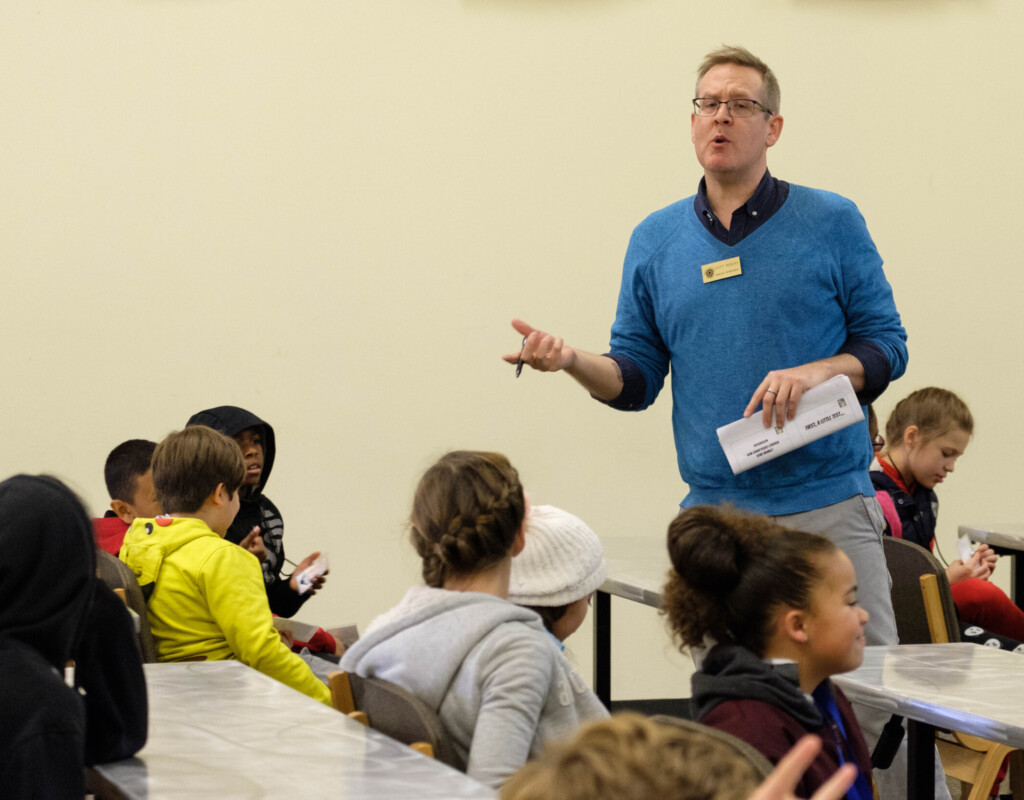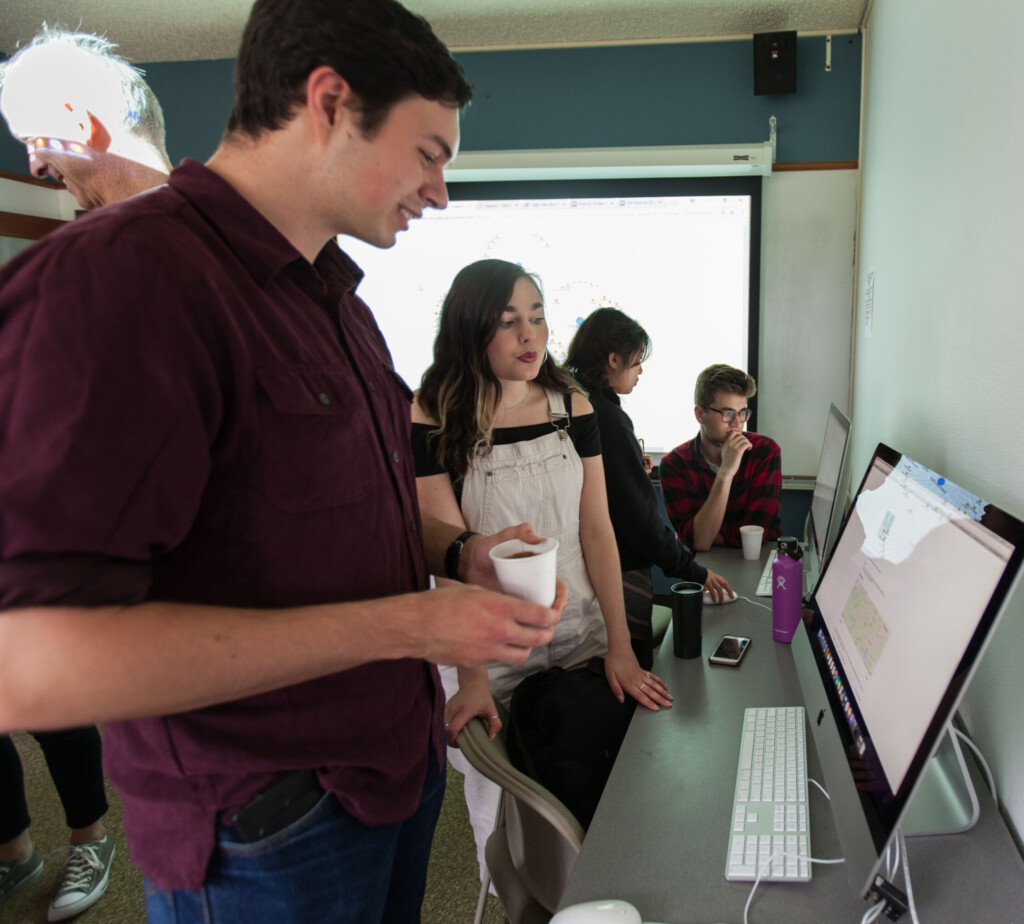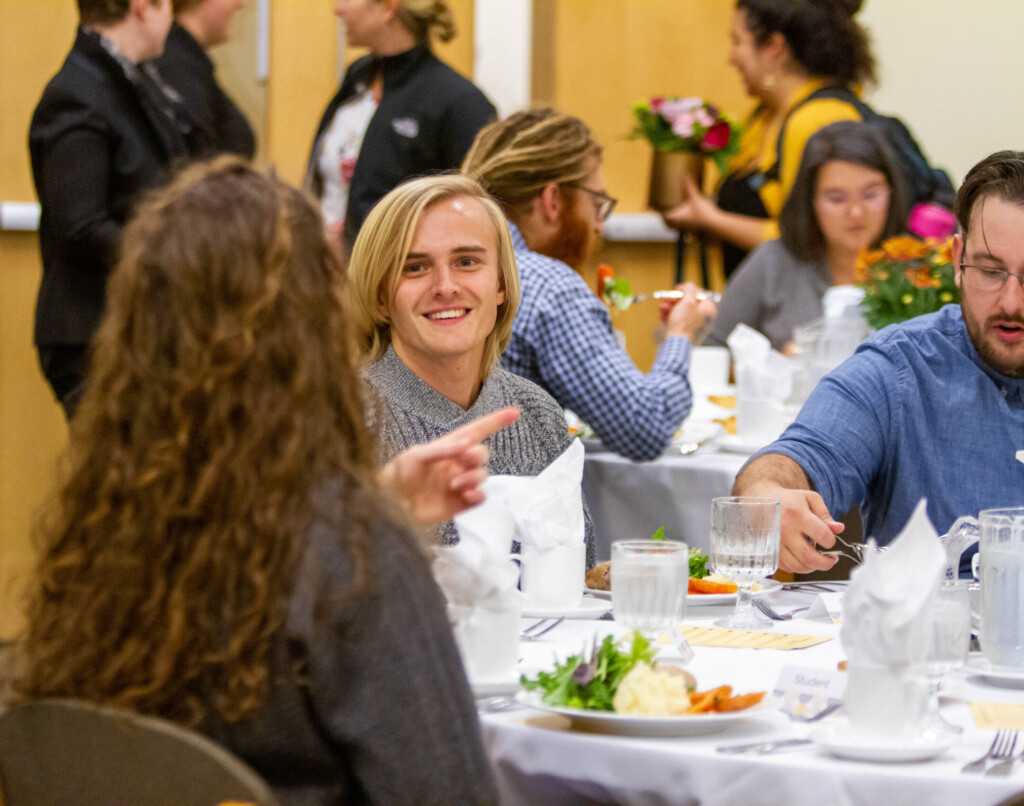Locating Humanities in the 21st Century
By Scott Rogers
Originally published in 2016
As scholars of the Humanities in the 21st century we find ourselves working in unusual settings. Places of faith and worship, educational contexts like high schools and public libraries, in newspapers, in comment forums, on radio shows, our “workplaces” often do not resemble the ivory towers of old.
Vignette #1 Prime Time Family Reading Night
I ask the question again… “what are symbols and why are they important?”
My audience, a mix of children ages 6 to 10 and their families, settle into the question. Some have an intentional look about them; brows furrowed, eyes fixed on the book we’re discussing. Others look down, away, hoping I won’t call on them to answer.
One of the parents, Kathy, is the first to speak up. She is in her late 30’s and accompanies her son, an 8-year old, every Tuesday to this community reading and discussion series. Prime Time Family Reading, as it is called, is a nationally recognized model for celebrating the value of books, reading, and family in underserved communities. It began in Louisiana, funded by a grant from the NEH, but has since spread across the country. Each night we share a meal, we make small talk, and then we get down to the business of reading books and discussing their meaning together.

“Symbols help us understand the deeper meaning to things. They’re another way to understand what things mean,” Kathy explains.
I nod in agreement. This is exactly what I was hoping to hear.
“Right, good, symbols represent things. So let’s think about the epigraph from Lon Po Po.”
I read it aloud.
To all the wolves of the world
For lending their good name
As a tangible symbol
Of our darkness.
Those last two lines I repeat several times for emphasis.
“What does the author mean? It’s a strange way to open a children’s story book, right? What do wolves symbolize?”
The intent faces return. I’m trying to move us toward a conversation about that last line…OUR darkness. Wolves–as characters in literary stories–help us understand people far more than they help us understand wolves. The adults can see where I’m trying to go, so they’re holding off on participating, waiting to see if one of the kids will answer.
A boy, maybe 10, raises his hand carefully. He’s unsure whether he should hazard a guess, but at this point he’s already committed. I call on him, “Lucas?”
“Wolves are symbols of bad things? I mean…they do bad things.”
I smile, nod. “Interesting, interesting. You say they ‘do’ bad things, but are they ‘bad’? I mean, are they naturally ‘bad’?”
Many of the kids nod their heads vigorously. They’ve read enough books and seen enough movies to know that wolves are bad. The Three Little Pigs, Little Red Riding Hood, Peter and the Wolf. All wolves, all bad.
“Why do you think wolves are so bad?” I ask.
Hands shoot up. “Because they are mean and scary.” “Because they trick people.” “Because they kill small things, cute things.” “Because they hide in the dark and come out at night.”

I laugh at their enthusiasm and my co-facilitator, a Lakewood branch librarian, steps in: “Right, but are wolves the only animals that do these things?”
Again, hands shoot up. “Bears.” “Lions.” “Sharks.” “Alligators.” “Tigers.”
I pause for a moment, and then I ask: “What about people? Are people bad? Can they be mean and scary? Can they trick other people? Do they kill small things, cute things? Do they ever lurk in darkness?”
I add, “Remember what the book said…How do wolves symbolize OUR darkness?”
This time the parents don’t hold back. I call on the first hand I see, but it is one of many; this question has struck a chord. Darkness, both symbolic and real, is something these parents are familiar with.
The respondent is a grandmother, Laura. She is in her 50’s, raising her three grandchildren and serving as the primary caregiver for her homebound mother. In the six weeks of the reading series, they have moved and overcome a nasty bout with flu, but they have not missed a minute of the series. They are among the best and most consistent participants in our discussions; the grandmother’s commitment and enthusiasm is heroic.
She explains matter-of-factly, “We all have some darkness in us. We’re all a bad decision or a wrong turn from something we might regret. Humans can be just like wolves, sometimes worse. In the books, the wolf takes the fall, he let’s us see the darkness without having to like it.”
Now the adults are nodding their heads in agreement and the kids are back to furrowed brows.
We share a moment or two of silence and then move on with the conversation.
Vignette #2 Digital Humanities Summer Institute
It’s mid-June in Victoria, BC, and I’m sitting in a classroom at the University of Victoria. It’s hot and the room isn’t equipped with air conditioning. Despite the heat and the sweat, I count myself lucky to be here. I’m on a scholarship learning how to use a programming language called Ruby on Rails. More importantly, I’m using Rails to design a little piece of software that scrapes data from social media sites using the hashtag as a search tool. Want to see all the Facebook photos tagged with #PacificLutheran or #PLU? This software can do it. Want to read every tweet that makes reference to #election2016? This software can do that too. I am lucky to be here, this opportunity is a privilege.
But right now, at this moment, I don’t count myself quite so lucky. Right now, I’m carefully searching hundreds of lines of code for a mistake I know I’ve made. How do I know I’ve made a mistake? Because nothing is happening. Actually, what I’m getting is worse than nothing. I’m getting “nil,” which isn’t a nothing, it’s a something. In fact, it just means I’ve made a mistake and the action I’m requesting is coming up “false.”
So I search and search until I find the spot where my code and the tutorial differ. It takes about an hour. The error is one line. In fact, it’s one piece of one line. A colon instead of a semicolon.
By now, the class has largely departed to enjoy the evening sun. My patient instructors have kept the classroom open so that a few of us with a higher pain threshold can stick around to fix our projects. They laugh when they see my error because it’s one they’ve made a thousand times.
I correct the mistake and run the program. It works.
Suddenly, my screen is awash with images. I’ve told my software to scrape Instagram for photos with the hashtag: #graffiti. It quickly populates with hundreds, thousands of images.
I spend the next hour lost in a global photo album that I’m creating via my interaction with a few hundred lines of code. I’m creating the album, the album is creating itself. I’m having my first experience with what we now call “big data,” but it’s surprisingly human. People tagging walls. People recording video of people tagging walls. The photos are equal parts inspiring, offensive, and entertaining.
I recognize in this moment that the digital does not replace the human. Rather, it extends the human into a world made by human hands, a world that looks so much like our own; full of lightness and darkness, love and hate, joy and deep sorrow. It is a world that once represented our hope for an egalitarian utopia, a place where everyone would be equal. Now we know that the same seeds of discord that we have sown in the material world are interwoven in the scripting languages of the web. And like all languages, they are at the mercy of their users.
In her book, Not for Profit: Why Democracy Needs the Humanities, Martha Nussbaum explains the mission of the Humanities as one focused on fostering the ability to:

“Imagine well a variety of complex issues affecting the story of a human life as it unfolds: to think about childhood, adolescence, family relationships, illness, death, and much more in a way informed by an understanding of a wide range of human stories. Not just by aggregate data.” (Nussbaum, 26)
Studying in the Humanities, then, means seeing the world authentically. It means trying to understand the richness of human experience, to trace its history, to value its variability. The humanities prompt us to ask who we are and how we came to be this way. They ask us to reflect, to understand, to see knowledge as a process, and to see meaning-making as a social activity, something negotiated. This is true whether we are working in the classroom or the community center, in print or online.
My field, English and Writing Studies, shows us how to read deeply and to understand the world. More specifically, it helps us see, value, and interpret the enormous scope and scale of life and experience. When we see ourselves reflected in a children’s book or when we are seen through our virtual identities, we are situated within a vast ecosystem of knowledge, history, meaning, and understanding, every cell of which, every 1 and every 0, is infused with a shared humanity.
Works Cited
Nussbaum, Martha C. Not for Profit: Why Democracy Needs the Humanities. Princeton, N.J: Princeton University Press, 2010. Print.
Young, Ed. Lon Po Po: A Little Red Riding Hood Story from China. New York: Philomel Books, 1989.


